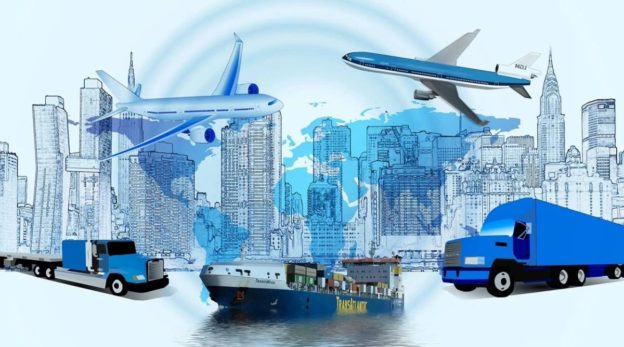The National Logistics Policy has come at the right time, as seamless connectivity, superior infrastructure, and strong export and logistics efficiency are essential to achieve these ambitious goals.
India aims to become a $20 trillion economy by 2040 and a developed nation by 2047. The National Logistics Policy has come at the right time, as seamless connectivity, superior infrastructure, and strong export and logistics efficiency are essential to achieve these ambitious goals.
Currently, the logistics costs in India are 13-14% of the GDP, compared to 7-8% in developed countries. Prime Minister Narendra Modi, while launching the policy, said that the aim is to bring the logistics cost to single-digit as soon as possible. The higher logistics costs are reducing the competitiveness of India’s exports. Reports suggest that higher logistics cost is leading to a competitiveness gap of $180 billion for India, and the difference will increase to $500 billion by 2030. The World Bank Logistics Index places India at the 44th position in logistics costs, even behind China and Vietnam, which are at 26th and 39th positions, respectively.
Several factors are responsible for high logistics costs in the country, from an unfavorable policy to an undermined multimodal transport system. However, the government’s effort with the National Logistics Policy and Gati Shakti-National Master Plan for multi-modal connectivity launched in October 2021 is paving the way for a brighter future.
Features of the new policy
After eight years of formulating a policy, the government has developed the National Logistics Policy driven by the vision “To develop a technologically enabled, integrated, cost-efficient, resilient, sustainable and trusted logistics ecosystem in the country for accelerated and inclusive growth.”
Also read| Modi Cabinet clears national logistics policy
The policy targets reducing the cost of logistics in India to be comparable to global benchmarks by 2030, improving the Logistics Performance Index ranking to be among the top 25 countries by 2030, and creating a data-driven decision support mechanism for an efficient logistics ecosystem.
The policy has four features that will be implemented through the Comprehensive Logistics Action Plan (CLAP). It includes:
- Integration of Digital System (IDS)
- Unified Logistics Interface Platform (ULIP)
- Ease of Logistics (ELOG)
- System Improvement Group (SIG)
The IDS will have 30 different systems of seven departments, integrating data from the road transport, railways, customs, aviation, and commerce departments. The ULIP will bring all the transportation-related digital services to a single portal. E-Logs will enable resolving issues as associations can reach out to the government directly.
Furthermore, the e-handbook on the policy gives insight into the standardisation of the warehousing sector. CLAP comprises integrated digital logistics systems, standardisation of physical assets, benchmarking service standards, human resource development, capacity building, development of logistics parks, etc. The government will also offer management courses around Logistics and Supply Chain for the sector’s growth. Furthermore, establishing multi-modal logistics parks (MMLPs) in crucial markets will improve first- and last-mile connectivity.
Conclusion
The mega policy vision is a way forward to a transformative approach for the country’s logistics sector. The NLP, in conjunction with the Gati Shakti Program, the Sagarmala and Bharatmala (waterways and roadways) schemes, the Dedicated Freight Corridors, etc., can be path-breaking. The policy aims to bring a modal shift in logistics and reduce the current over-dependence on roads with over 60% against 25% globally. The global dependence on railways is 60%, whereas India’s is just 30%. Similarly, waterways have only a 5% share in the modal mix.
The country’s economic growth largely relies on trade, and to boost the same, the focus on efficient infrastructure for the movement of goods is virtually important. The current infrastructure and policy cannot match the pace that is required from India to grow exponentially in the coming years. The policy prioritising robust infrastructure will bring cost minimisation, boosting exports and eventually adding to the country’s growth. India is right on the path to emerging as the next big economy in the world.
https://www.financialexpress.com/infrastructure/how-will-the-new-national-logistics-policy-be-a-game-changer-for-the-indian-economy/2688348/





